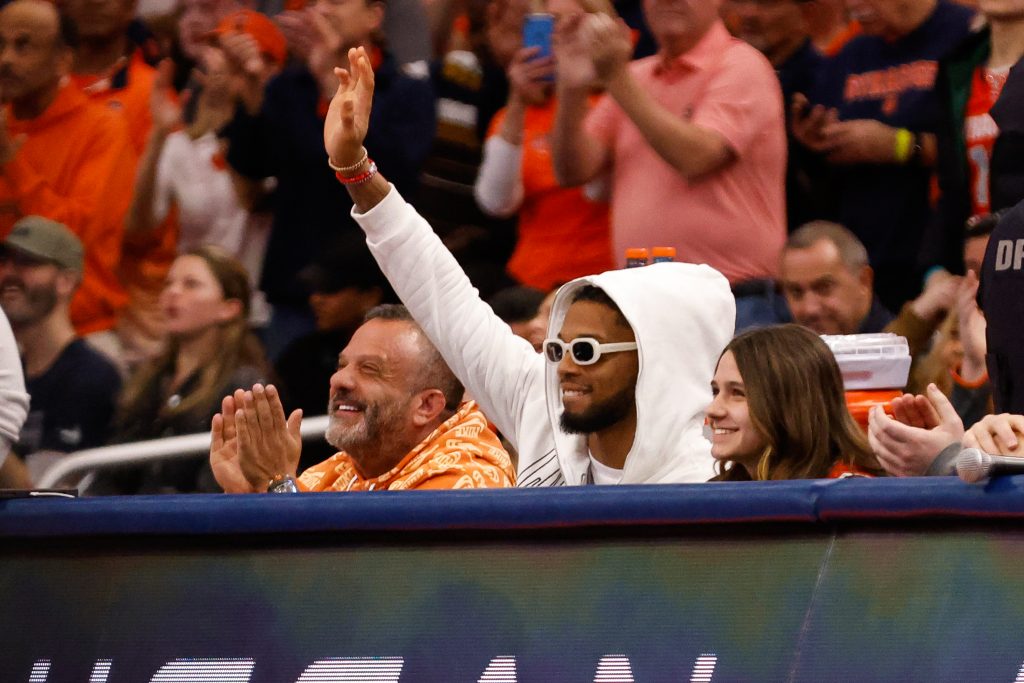
Conspiracies about DaMAR Hamlin’s injury find traction
Social media outrage fueled false theories about the Buffalo Bills safety’s on-field collapse.

hen Damar Hamlin looked on from a box seat during the Bills-Bengals playoff game in January, the Buffalo safety received an appreciative roar from the crowd, an outpouring of supportive well-wishes from thousands of football fans. Only a few weeks earlier, Hamlin’s sudden collapse in the first quarter had him taken off the field to an ambulance and abruptly canceled the Monday night showdown between the same teams.
With Hamlin able to return to Highmark Stadium less than two weeks later, there was a noticeably darker reaction on social media in right-wing circles as the AFC playoff game got underway.
“This REEKS of a cover up,” claimed one popular conspiracy theorist on Telegram.
“He’s no longer with us,” tweeted Aubrey Huff, a former Major League Baseball player turned right-wing, reactionary tweet-a-holic.
“This is squarely on the back of every single person that pushed that poison,” tweeted Louis Uridel, a bodybuilder with more than 6,200 Twitter followers.
Over the course of Hamlin’s initial recovery in January, anti-vaxxers grew convinced that the 24-year-old player’s freak injury was in part caused by the COVID-19 vaccine, and claimed the man attending the Bills game wasn’t actually Hamlin, but rather a body double.
When David A. Larsen – a public health professor at Syracuse University’s Falk College – heard stories about the vaccine links and a body double, he found their supposed theories amusing but not entirely shocking.
“The conspiracy is out of the bag now, so it’s never going back in,” Larsen said. “People say they don’t trust the science. But if you can’t trust the process to determine if something is safe, then good luck.”
The Hamlin conspiracy saga was only the latest case of sports and disinformation that have persisted in recent years fueled by social media outrage, talk show pundits and online mischief makers seeking to create havoc for athletes, teams and leagues.
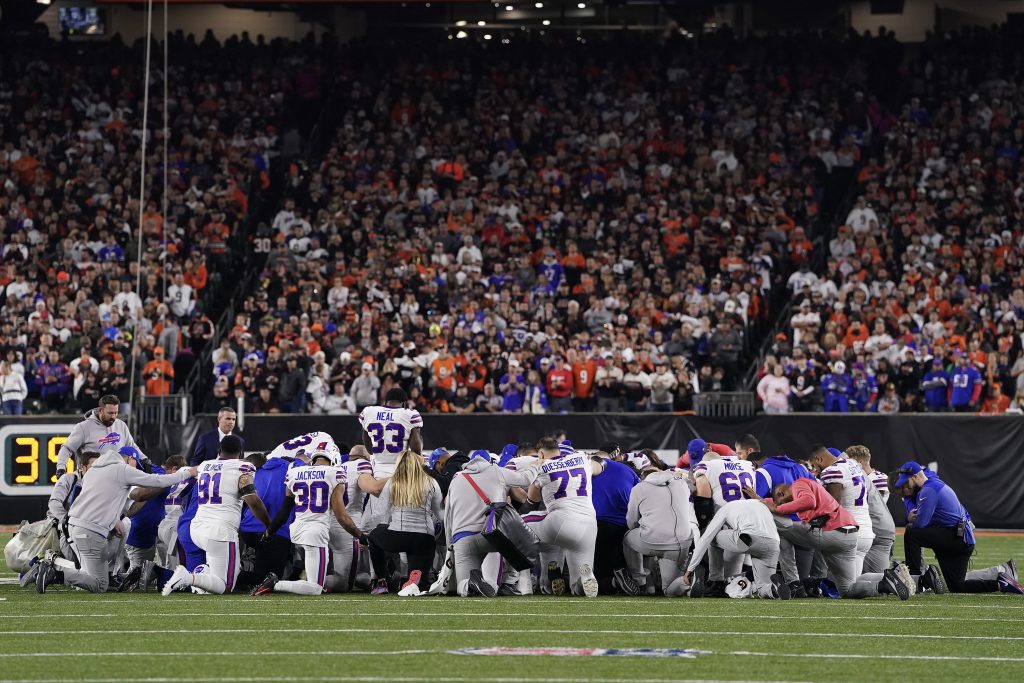
Tying Hamlin’s collapse to the COVID vaccine came only after a resistance among some sports stars to get vaccinated. NBA Hall of Famer John Stockton was eager to put in his two cents in early 2022.
“There’s 150 I believe now – it’s over 100 professional athletes dead, professional athletes, the prime of their life, dropping dead that are vaccinated, right on the pitch, right on the field, right on the court,” Stockton told The Spokesman-Review.
Kyrie Irving and Cole Beasley have been vocal about their refusal to receive the COVID vaccine while other athletes like Simone Biles and Andy Murray have urged their teammates and peers to get vaccinated.
Cyndy Scheibe, co-founder of the non-profit Project Look Sharp and Ithaca College professor, said misinformation has become a more prominent subject in her research and teaching related to media literacy in recent years.
Schiebe attributes the increase to former President Trump who popularized the phrase “fake news,” amplified conspiracy theorists on social media, and continues to claim the 2020 presidential election was rigged.
“If there was a person who single-handedly made people aware of media literacy, it was him,” Scheibe said.
Media literacy, the focal point of Project Look Sharp – an outreach program dedicated to implementing media literacy curriculum in K-12 and college classrooms – involves taking a more critical approach to examining media by asking questions like, “Who’s behind this message?” and “What is their purpose?”
Project Look Sharp was founded in 1996, and with the surge in media misinformation over the past several years, its goals are finally coming to fruition. A growing number of states are adding media literacy courses into their curriculum, such as New Jersey, which mandated the classes in public schools earlier this year.
In the current media climate – overrun with clickbait headlines and news summarized in 280 characters or less – Sheibe said it’s essential for the modern-day consumer to interpret media messages with a keen eye.
The social media reaction following Hamlin’s collapse doesn’t lend much confidence to the everyday application of media literacy. Huff, the former MLB player, attracted 741 likes and 49,000 views with his tweet, which also reads “NFL is covering it up” in addition to the implication that Hamlin is dead.
The @theslyshow Twitter account posted the video of Hamlin waving to Bills fans from his box seat with the accompanying caption, “Why is Damar Hamlin throwing up a pyramid symbol and the number 666? And why wasn’t there any visual of his face from today’s game? Weird.” The tweet amassed more than 142,000 views, 258 likes, and 113 retweets.
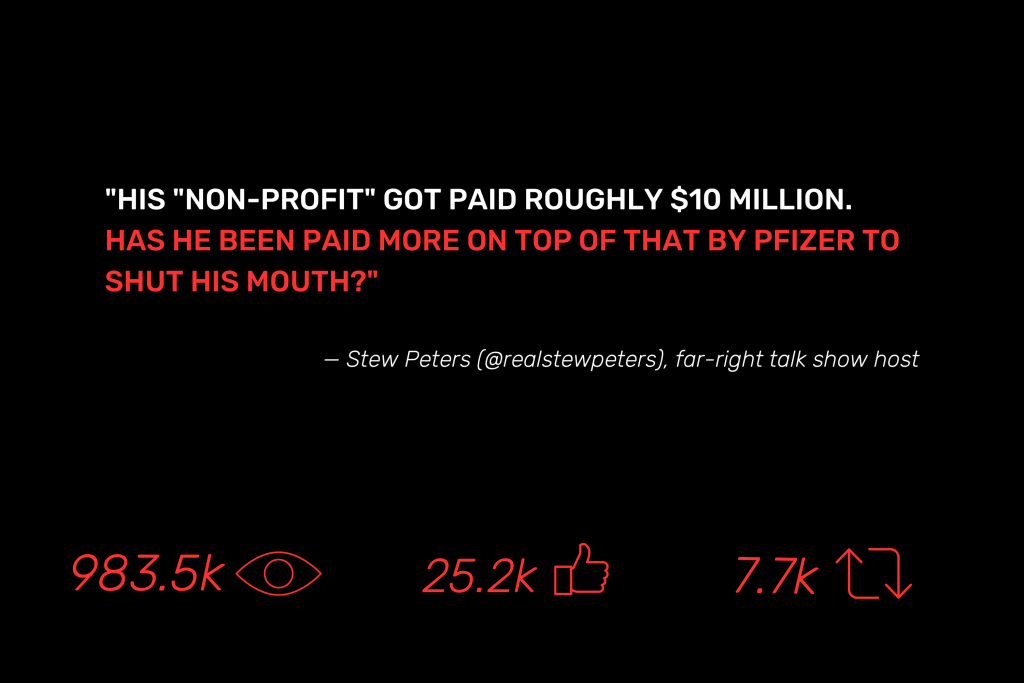
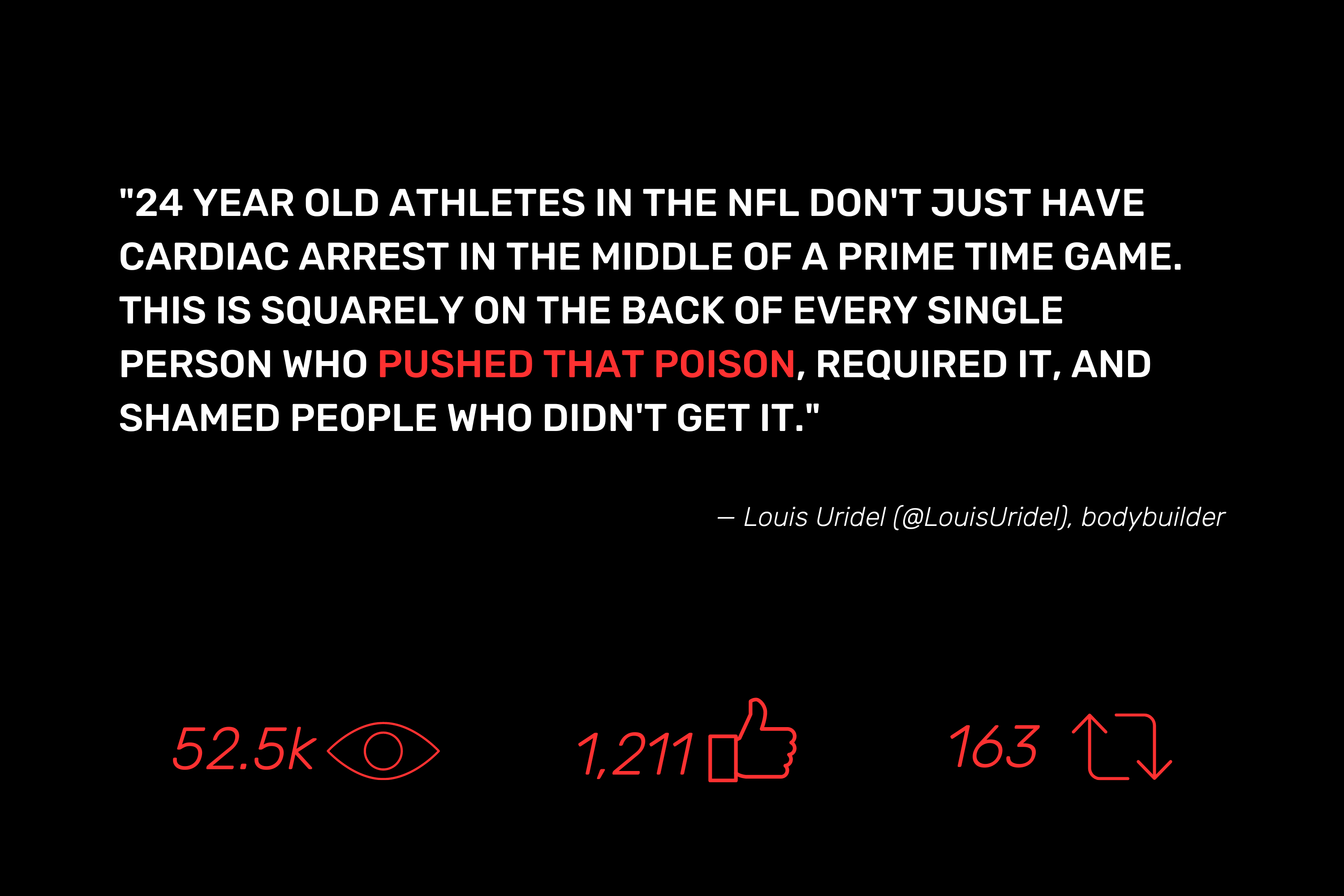
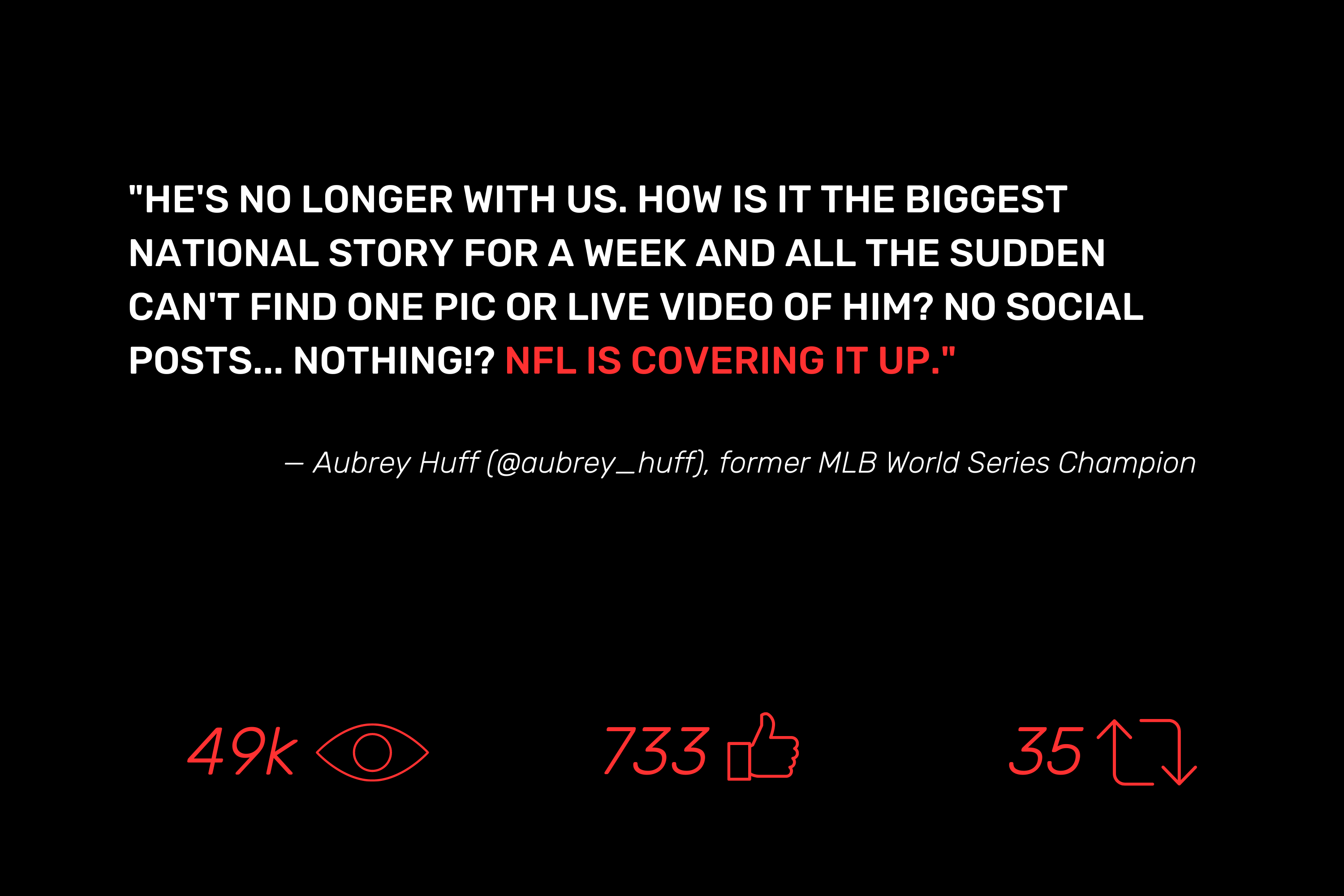
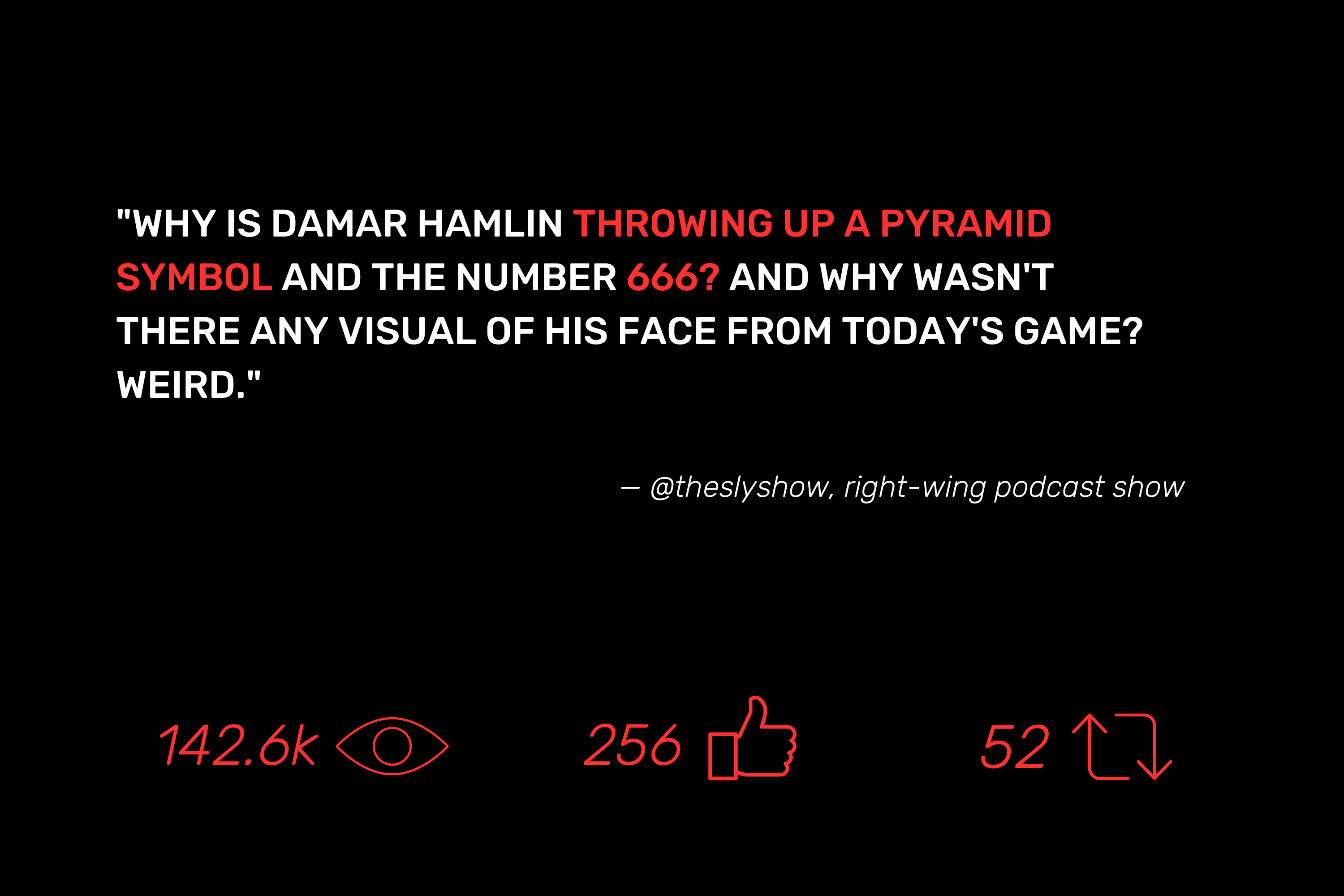
“For many people, this is almost a game to see how far they can actually go and who will take the bait,” said Anthony Adornato, chair of SU’s broadcast and digital journalism department.
Adornato, whose research focuses on journalists’ use of social media, said outlandish reactions to Hamlin’s collapse didn’t surprise him. He recalled thinking at the time this was another high-profile event, making it easy to get into the feeds of many people – giving extreme groups an opportunity to spew misinformation.
“There’s also a thrill element here where they see that it’s drawing the attention of mainstream media, who are now reporting about the conspiracy theorists that are saying the COVID vaccine had to do with his injury,” Adornato said.
Dispelling the myths about Hamlin’s case has been difficult because the cause isn’t yet known. The likelihood that his collapse had anything to do with the vaccine is low, Larsen said, and Hamlin’s agent has said there is no known link between the injury and the COVID vaccine.
Myocarditis is a known side effect of the COVID-19 vaccine and the believed root of Hamlin’s injury among anti-vaxxers. The condition was traced in 131 out of 123 million recipients of the vaccine, according to the Center for Disease Control and Prevention and no deaths came as a result.
Instead, the more widely-speculated culprit is the condition commotio cordis, a rarity in which a well-timed, heavy blow to the chest causes a quivering heart and cardiac arrest. Commotio cordis afflicts 15 to 20 people a year, most of them young athletes, according to UT Southwestern Medical Center.
When Hamlin sat down with Michael Strahan on Good Morning America in early February, Strahan asked how the doctors described what happened to him, to which he replied, “That’s something I want to stay away from” after a long pause.
This led to another social media frenzy, headlined by right-wing talk show host Stew Peters, whose mocking tweet received almost 3 million views, 7,700+ retweets, and over 25,000 likes.
Despite several appearances in the public eye throughout his recovery process, Hamlin is still met with conspiracy theorists that cling to the notion the vaccine killed him.
“No one has any shame,” said Cathy Leogrande, professor of media literacy at Le Moyne College. “Social media has taken shame away. Shame equals publicity, which equals good.”
To combat misinformation, Leogrande and Scheibe advocate for media literacy to be a practice implemented in the early, developmental years. Scheibe detailed an example she uses with elementary-aged kids about real fruit in Cherry 7UP.
“Is there fruit in Cherry 7UP? How could you find that out?” Scheibe said. “You can be a little suspicious. We tell kids that they can be a detective and look for clues, and show them the clues they might look for.”
Similar questions can be posed for recent cases in sports that extended to social media debates. Last October, the NBA’s Irving spurred controversy when he posted a link to an anti-Semitic film on Instagram and Twitter. Debate also followed former San Francisco 49ers quarterback Colin Kaepernick’s decision to kneel for the national anthem in 2016. When these instances reach the world of social media, Scheibe and Leogrande instruct consumers to ask these questions:
- Who created this message?
- How might different people interpret this message?
- Why is this message being sent?
It’s a race of sorts between the spread of disinformation on a multi-billion dollar platform and the implementation of media literacy in education. Given the virality of Twitter and the recent media antics regarding Hamlin, experts are concerned about what lay ahead.
“If you’re living in a world where facts don’t matter, then that’s a problem,” Scheibe said. “It makes it harder and harder for people from different viewpoints to have conversations.”
